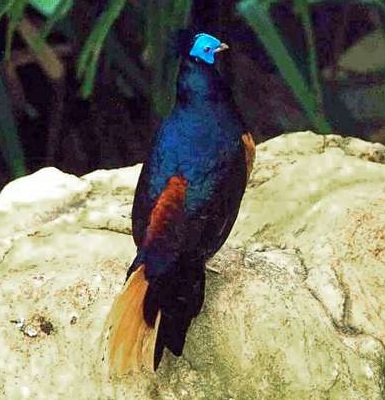A Virus Emerges – with a Human Helping Hand
Where do viruses come from? Like us, they are products of their genomes, and like our genomes, viral genomes are palimpsests of writing, overwriting, cutting and pasting, plagiarism and happenstance. Genes all have to come from somewhere originally, and Nature is a great recycler. Although some sections of genes have arisen recently by co-option of previously useless sequence, looking at most genes gives you a distinct feeling of déjà vu. Time and again handy functional modules appear in novel guises, doing sort of the same job, but in a slightly different context.
See what I did there? I pinched those last three sentences from something I wrote two weeks ago and changed a few bits so that it worked in this new piece. That’s what viruses do, driven by the need to re-purpose as they switch hosts, and fueled by encounters with new sources of genetic code – sometimes helped, as in the following amazing tale, by the unsuspecting hands of scientists.
A paper just published in PLOS Biology, “The Extraordinary Evolutionary History of the Reticuloendotheliosis Viruses”, describes a spectacular story of host-jumping, genome splicing and derring-do by a virus that has spread rapidly through bird populations in the last half-century. In this paper, Anna Maria Niewiadomska and Robert Gifford use what amounts to viral palaeontology to assemble what they rightly call “the extraordinary evolutionary history of the reticuloendothelial virus” (REV). There’s a superb accompanying Primer, “The Mongoose, the Pheasant, the Pox and the Retrovirus”, by Lucie Etienne and Michael Emerman that sets this in the context of other rapidly emerging and host-skipping infections, including those where humans have played an unwitting role.

Reticuloendotheliosis is a nasty disease of domesticated fowl that seems to have come from nowhere, and is also known to affect wild bird populations. Read the research article and the Primer to get the full detective story and to find out how the paleovirologists traced the path of REV through tissue samples, sequence databases and the scientific literature, but here’s what they think happened (contains plot-spoilers!):
a) A retrovirus undergoes an ancient genome-splicing event, and starts infecting mammals tens of millions of years ago, leaving fossil traces in their genomes.
b) At least 8 million years ago, one of its active descendants infects a range of Madagascan carnivore species, including some mongoose-like animals. There’s no evidence of its presence in birds until the 20th century.
c) Somehow this virus ends up in a Borneo fireback pheasant in the Bronx Zoo in 1937. The implication is that the menagerie brings together exotic animals (and their viruses) that have previously never encountered each other, perhaps helping the virus jump from mammal to bird, becoming REV in the process.
d) Malaria researchers manage to isolate the malarial parasite Plasmodium lophurae from this pheasant, and they keep the parasite stock going by infecting chickens, ducks and turkeys, presumably also transmitting the viral contaminant.
e) At some point in this process, the ancient mammalian retroviral genome gets incorporated into the genomes of two bird viruses – a pox virus and a herpes virus.
f) These viruses (REV and its derivatives) cause outbreaks in domestic and wild birds over the last 50 years, often triggered by contaminated vaccines, resulting in anaemia, suppression of the immune system and cancer.
I’ll leave the last word to Gifford: “We became intrigued by these viruses because their distribution in nature suggests something very unusual has occurred during their evolution. Unfortunately, the law of unintended consequences applies in the realm of infectious disease research. While we can’t escape that fact, we can use modern sequencing technologies to survey viral genetic diversity, so that changes in the ecology and evolution of important viral pathogens can be monitored and responded to more effectively. Our analysis of REV illustrates how such an approach might work.”

Anna Maria Niewiadomska,, & Robert J. Gifford (2013). The Extraordinary Evolutionary History of the Reticuloendotheliosis Viruses PLoS Biology, 11 (8) DOI: 10.1371/journal.pbio.1001642
